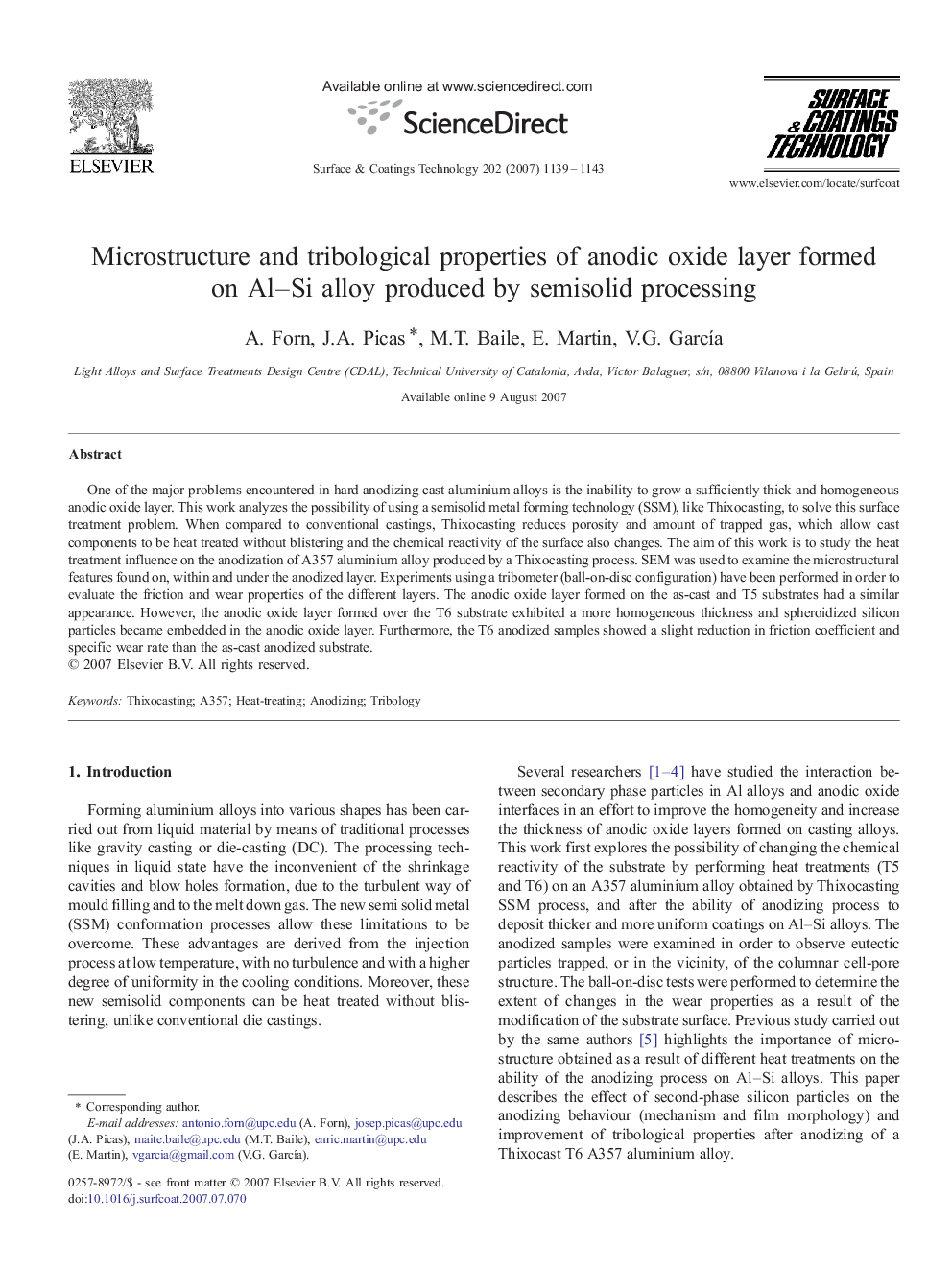| Article ID | Journal | Published Year | Pages | File Type |
|---|---|---|---|---|
| 1661727 | Surface and Coatings Technology | 2007 | 5 Pages |
One of the major problems encountered in hard anodizing cast aluminium alloys is the inability to grow a sufficiently thick and homogeneous anodic oxide layer. This work analyzes the possibility of using a semisolid metal forming technology (SSM), like Thixocasting, to solve this surface treatment problem. When compared to conventional castings, Thixocasting reduces porosity and amount of trapped gas, which allow cast components to be heat treated without blistering and the chemical reactivity of the surface also changes. The aim of this work is to study the heat treatment influence on the anodization of A357 aluminium alloy produced by a Thixocasting process. SEM was used to examine the microstructural features found on, within and under the anodized layer. Experiments using a tribometer (ball-on-disc configuration) have been performed in order to evaluate the friction and wear properties of the different layers. The anodic oxide layer formed on the as-cast and T5 substrates had a similar appearance. However, the anodic oxide layer formed over the T6 substrate exhibited a more homogeneous thickness and spheroidized silicon particles became embedded in the anodic oxide layer. Furthermore, the T6 anodized samples showed a slight reduction in friction coefficient and specific wear rate than the as-cast anodized substrate.
